Facilities & Programs
Academic Programs & Initiatives

African-American History, Culture, and Digital Humanities (AADHum) Initiative
The African American History, Culture, and Digital Humanities (AADHum) Initiative brings African American studies and digital humanities together in order to support scholars and expand upon both fields, making the digital humanities more inclusive of African American history and culture and enriching African American studies research with digital methods, archives, and tools.

Arts for All
The new Arts for All initiative partners the arts with the sciences, technology and other disciplines to develop new and reimagined curricular and experiential offerings that nurture different ways of thinking to spark dialogue, understanding, problem solving and action. It bolsters a campus-wide culture of creativity and innovation, making Maryland a national leader in leveraging the combined power of the arts, technology and social justice to collaboratively address grand challenges.

Design Cultures & Creativity (DCC)
Design Cultures & Creativity (DCC) fosters an open, collaborative, and social environment that encourages students to explore relationships between design, society, and creative practices. The DCC is passionate about emerging technologies and their impact on the world, and even more importantly, how designs can change the world. DCC students are innovative thinkers and makers who engage in research and collaborative projects on topics as varied as identity, connectivity, social justice, art, design, and all things creative in an era when digital media link us on a scale unprecedented in human history.

Immersive Media Design
Immersive Media Design is the only undergraduate program in the country that synthesizes art with computer science to develop immersive media. Students learn how to code, create and collaborate using the latest digital tools and technologies. Code with distinguished computer science faculty who excel in designing algorithms that improve the detail and speed of immersive displays. Create with renowned art faculty who push the boundaries of expression and technology in new and inventive ways. Collaborate in teams to produce imaginative, innovative, and interactive experiences.
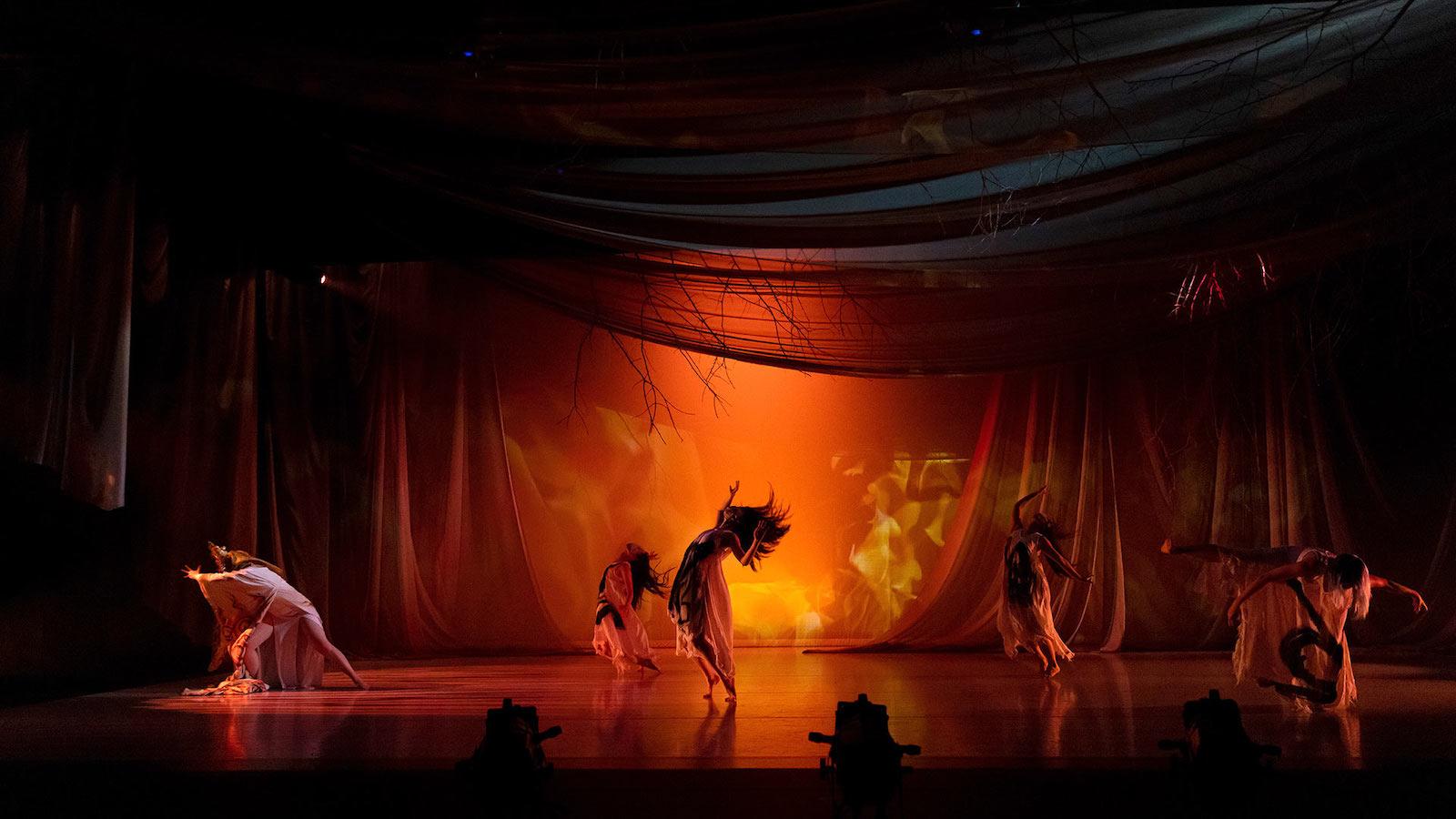
Maya Brin Institute for New Performance
The Maya Brin Institute for New Performance gives resources to support the practice and scholarship of creative technologies in performance, advancing our role as innovators in the transdisciplinary field of arts and technology. The School of Theatre, Dance, and Performance Studies is home to the Maya Brin Institute for New Performance. Students are exposed to emerging media formats such as immersive design technology and webcasts that enhance their creative projects and prepare them to push the bounds of theater, dance and performance studies.
Centers, Labs, and Spaces

Applied Research Laboratory for Intelligence and Security (ARLIS)
The Applied Research Laboratory for Intelligence and Security (ARLIS) was established in 2018 under the sponsorship of the Office of the Under Secretary of Defense for Intelligence and Security (OUSD(I&S)). As a University-Affiliated Research Center (UARC), ARLIS's purpose is to be a long-term strategic asset for research and development in artificial intelligence, information engineering, and human systems.

AR Sandbox
The AR Sandbox, based in the STEM Library in William E. Kirwan Hall within the 1st Floor Makerspace, is an interactive educational and technology that combines elements of augmented reality with a physical box containing white sand. It allows users to model 3D topographic features like mountains, valleys, rivers, or even simulations of ecosystems, displayed in real-time on the sand's surface making it an engaging, immersive and educational experience. As users manipulate the sand, the virtual terrain adjusts accordingly. The Sandbox has potential applications in Geography, Geology, Hydrology, Environmental Science, as well as general spatial awareness and interactive learning.

Brain, Architecture & Virtual Reality (BRAVR) Lab
The goal of Brain, Architecture & Virtual Reality (BRAVR) Lab is to develop, test, and validate a data-driven approach using virtual reality (VR) and electroencephalogram (EEG) technology for understanding the potential physiological influences of sustainable design features. BRAVR proposes technology-enabled, repeatable measures for quantifying how Sustainable Building features affect occupancy emotion and cognitive functions – proxies for health and well-being.
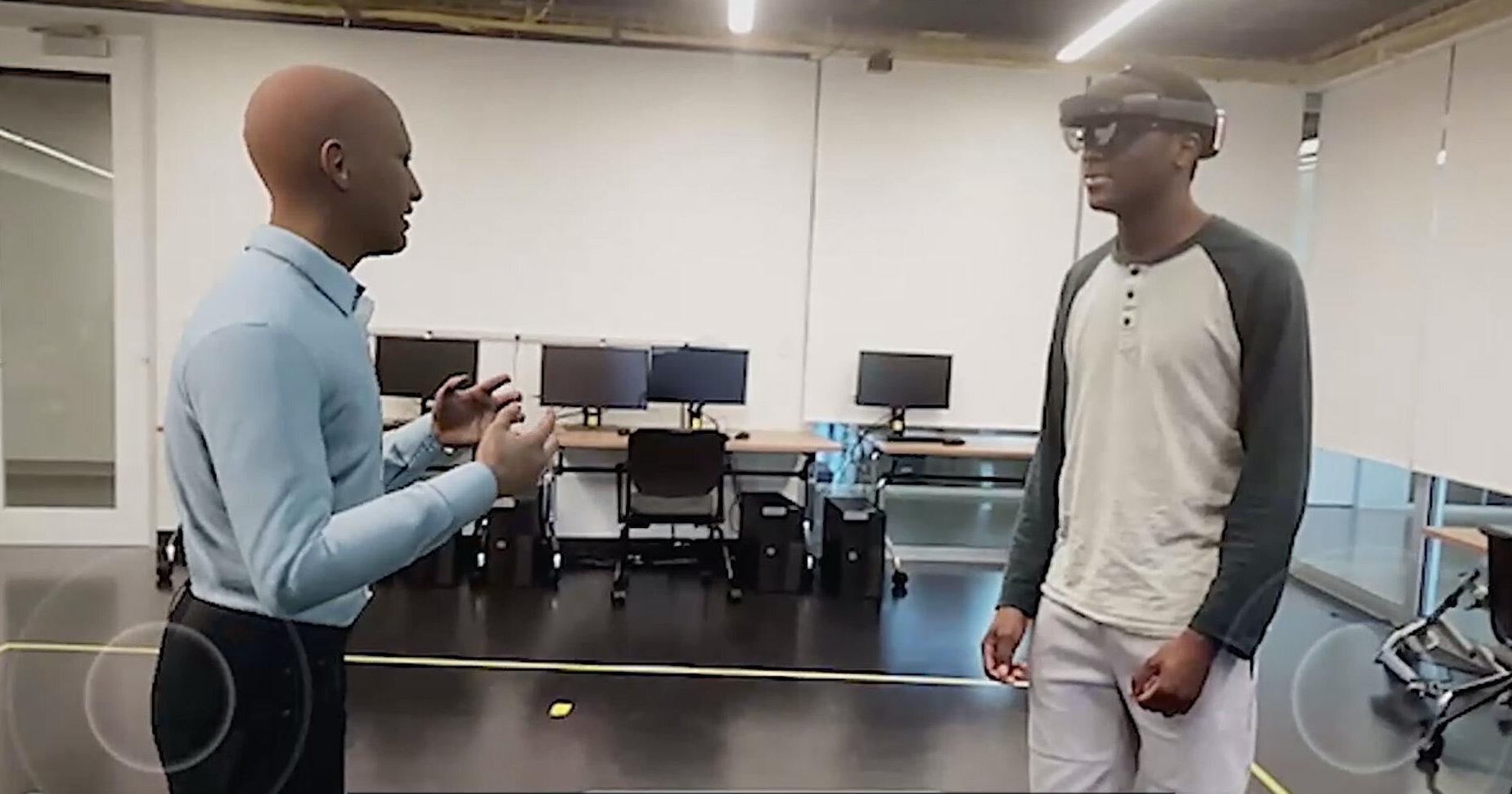
Brain & Behavior Institute (BBI)
Established in January 2021, the Brain & Behavior Institute (BBI) elevates and expands existing strengths in UMD neuroscience, advances the translation of basic science, recruits outstanding and diverse faculty, and establishes world-class core facilities. The BBI is a centralized community of investigators who pursue bold, impactful research on the brain and behavior.

Brendan Iribe Center for Computer Science and Engineering
The Brendan Iribe Center for Computer Science and Engineering embodies the University of Maryland's excellence and provides space for students, faculty and staff to be the future. The building’s six floors support groundbreaking research in virtual and augmented reality, artificial intelligence, robotics, computer vision, algorithms, programming languages and systems.

Capital News Service, Studio C: Data Lab
The Capital News Service (CNS) College Park New Bureau, Studio C: Data Lab is located on the third floor of Knight Hall on the University of Maryland campus. Studio C is the digital nerve center of the CNS operation. Students in the Data Lab develop innovative data-driven web applications, interactive graphics and in-depth web projects. They serve as lead producers for CNS’ destination website and help test innovative new ideas to advance the practice of journalism.

Center for Medical Innovations in Extended Reality (MIXR)
MIXR provides the scientific foundation in support of regulatory requirements and decisions regarding XR devices; MIXR's focus will be on current gaps and evaluation challenges across a range of clinical specialties and various XR hardware and software platforms.

Extended Reality Flight Simulation and Control Lab
This Extended Reality Flight Simulation and Control Lab combines (1) virtual and augmented reality (VR/AR), (2) wearable devices such as full-body haptic feedback and biometry tracking suits, and (3) motion-base systems to create immersive, Extended Reality (XR) piloted flight simulations. Research topics include human-machine interaction, innovative pilot cueing methods, and advanced flight control laws.

Holocamera Studio
The Holocamera Cinematic Avatar Imaging Studio is located in A.V. Williams and contains more than 300 4K cameras synced together. University of Maryland researchers can capture data from all angles and perspectives. Using this information they create a 3D-model that VR users can explore fully to learn in a life-like environment. See the Holocamera Studio in action in this YouTube Video: Immersive Education in a Virtual Space.

Human-Computer Interaction Lab (HCIL)
The Human-Computer Interaction Lab (HCIL) has a long, rich history of transforming the experience people have with new technologies. From understanding user needs, to developing and evaluating those technologies, the lab’s faculty, staff, and students have been leading the way in HCI research and teaching. HCIL faculty come from a variety of departments across campus including computer science, education, psychology, engineering, and the humanities.

Lab for Applied Social Science Research (LASSR)
The Lab for Applied Social Science Research (LASSR) focuses on a series of critical issues of public concern including policing, community relations, health disparities, and education inequality. LASSR aims to partner and collaborate with government entities, organizations, and businesses to better address these issues. LASSR aims to better collaborate with policy makers and community members to bridge the gap between academics and non-academics. LASSR’s core belief is that scholarly research can simultaneously be rigorous and applied directly to impacting policy and community.
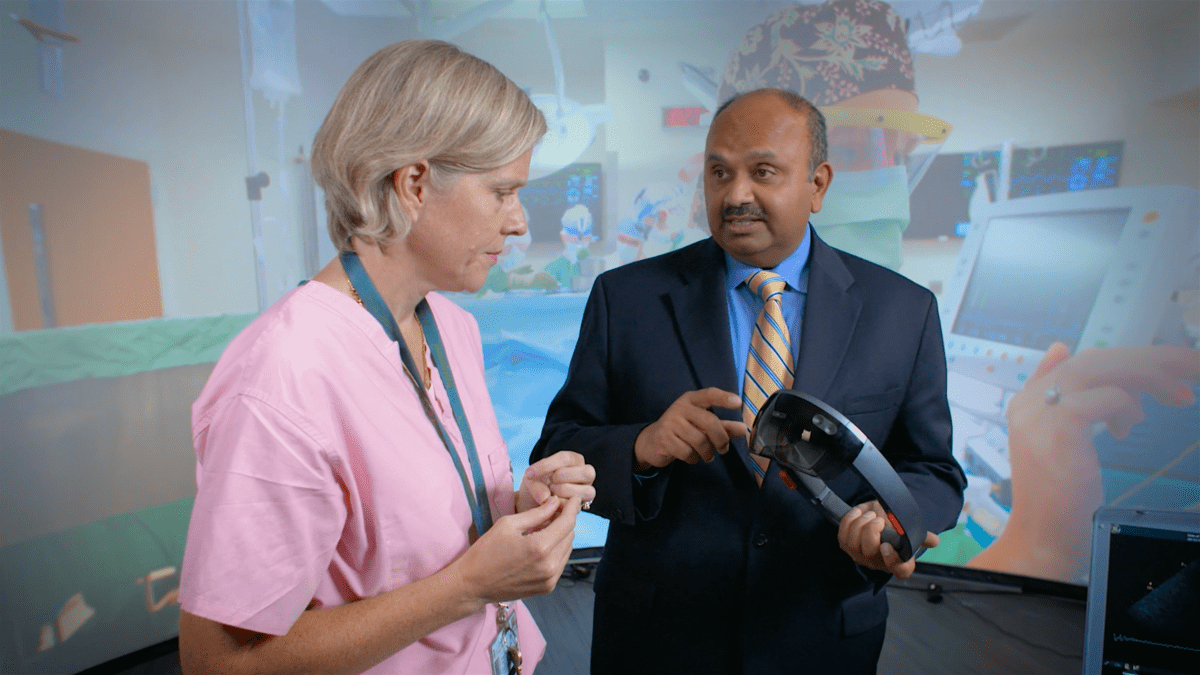
Maryland Blended Reality Center (MBRC)
The Maryland Blended Reality Center (MBRC) is a multidisciplinary partnership that joins computing experts at the University of Maryland with medical professionals at the University of Maryland, Baltimore. The center’s mission is to advance visual computing tools—many of them based in immersive technologies like virtual, augmented and mixed reality—that can be used for emergency medicine, health care and innovative educational and training modules.

Maryland Institute for Technology in the Humanities (MITH)
Maryland Institute for Technology in the Humanities (MITH) is an interdisciplinary group of researchers who collaboratively advance the study of cultural heritage and arts using computational technologies while also training the insights and approaches of the humanities on the computational technologies that shape our world. As a center within the College of Arts and Humanities (ARHU), MITH has served as a world-class concentration of expertise for more than 20 years.
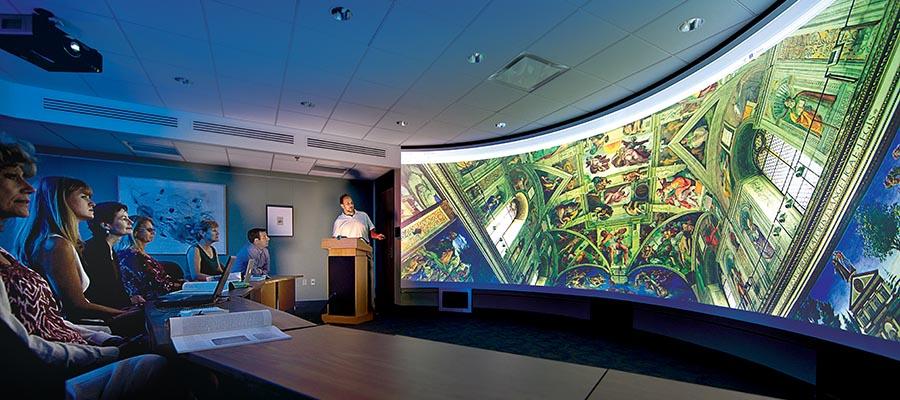
Michelle Smith Collaboratory for Visual Culture
The Collaboratory fosters an environment of curious and resourceful inquiry into the digital humanities, specifically digital art history, to support student and faculty research and teaching, both within the department and throughout the university community. As fellows and interns, graduate and undergraduate students form the core of The Collaboratory community and thrive in a space of expression and iterative, hands-on learning.
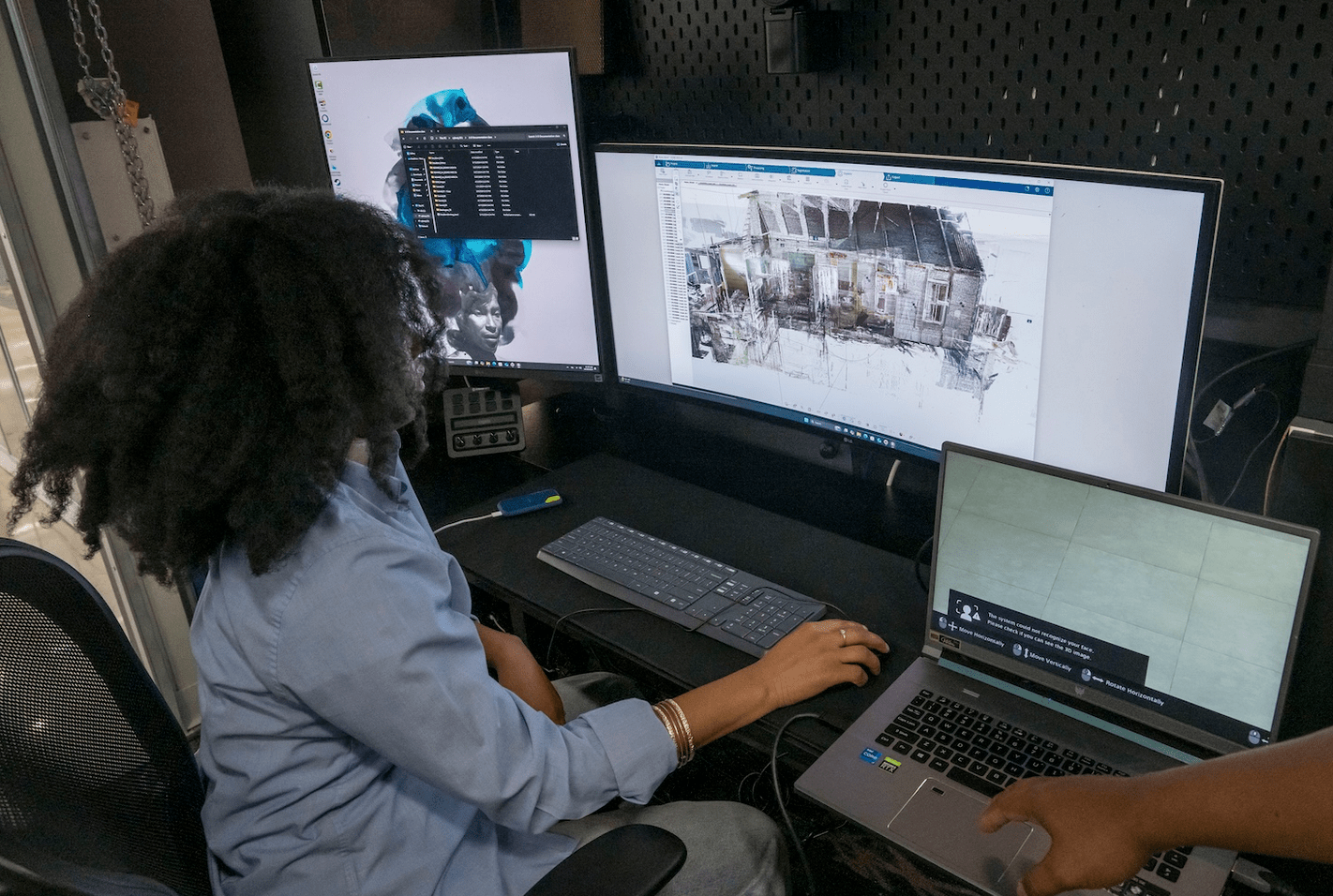
NarraSpace
Located within the Maryland Institute for Technology in the Humanities (MITH), NarraSpace invites scholars and creators—especially BIPOC and queer voices—to explore deeply personal, often indescribable experiences. With tools like virtual reality headsets, spatial reality displays and gaming equipment, the lab is helping scholars push the boundaries of what storytelling—and scholarship—can be.

Small_Artifacts Lab
The Small Artifacts Lab, a.k.a. SMART Lab, advances interactive technologies by designing, prototyping, and evaluating novel artifacts that are personal, hands-on, and often small when it comes to the form factors. The Lab's interests span the methods of building these personal artifacts (through design and interactive fabrication), the scenarios in which they're used (in virtual and augmented reality), and the users who can benefit from them (via assistive and enabling technology).

STEM Library Makerspace
Located on the first floor of the STEM Library, the Makerspace is home to many kinds of equipment including an Augmented Reality Sandbox (AR Sandbox), which is an interactive box of sand connected to an XBox Kinect and projector. Faculty and students can use it for a variety of activities including modeling topographic maps, exploring hydrologic systems, and demonstrating geomorphology principles.

University of Maryland Autism Research Consortium (UMARC)
The University of Maryland Autism Research Consortium (UMARC) is an interdisciplinary group of researchers, clinicians, and service providers in the Departments of Hearing and Speech Sciences, Psychology, Human Development, Linguistics, Kinesiology, Special Education, Career Center EmployABILITY program, and MAVRIC at the University of Maryland in College Park and, the University of Maryland Schools of Medicine and Social Work in Baltimore.
Student Groups

XR Club
The XR Club was established to create an environment in which UMD students interested in augmented and virtual reality application development can collaborate with like-minded individuals and gain access to cutting-edge hardware and software tools.

